review: Canon EF 8-15mm f/4L fisheye zoom (lens review)
Venturing out again after posting a few photos shot with the Canon EF 8-15mm f/4L fisheye zoom, I tried for a more diverse range of images to show what this lens is capable of … and also compare it with the Canon 15mm f2.8 fish-eye lens to see how the brand-new zoom lens stacks up against the older fixed focal length lens.
I was brave enough to try this lens at 15mm for some funky urban portraits of a model, Kate. Bendy! The trick here is to keep as even as possible and not tilt the lens up or down, or else you risk making your subject look cartoonish. So I crouched down a bit, and worked at belly-button level, keeping the camera as level as possible.
I think the image works, but I do believe a fish-eye is a limited lens in terms of portraits. Even full-length portraits. As mentioned in the previous article on this lens, the fish-eye look can quickly feel over-done when there is a great number of images with the same look. The distorted view that a fish-eye gives, tends to pulls too much attention to the lens’ effect itself.
Next up, I photographed dance performers working at a promotional event.
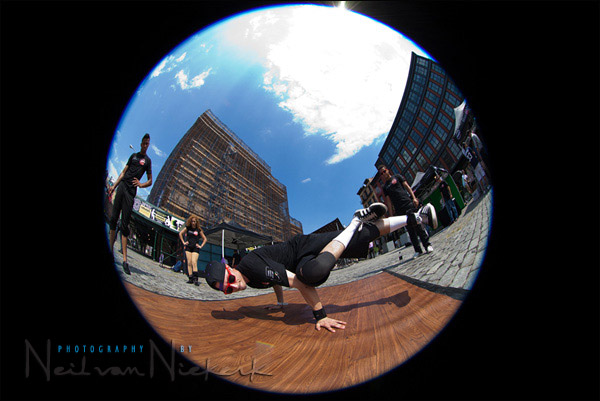
When zoomed to 8mm on a full-frame camera such as the Canon 5D mk II, the lens gives this surreal circular image. The field of view is an impressive 180 degrees. It’s near impossible not to get your own feet or shadow in the image.
With this, I do believe the Canon 8-15mm fisheye zoom will end up being used as a dual focal-length lens when used on a full-frame camera. Photographers will either use it at (or around) 15mm where there is no vignetting, or go for the full effect. Inbetween focal lengths show a very specific vignette, with the image cut off by an ever-increasing black circle.
As an example, here is an image shot at 12mm and the distinct black vignette is there. Without it appearing as that circular shape, it just looks intrusive to my eye.
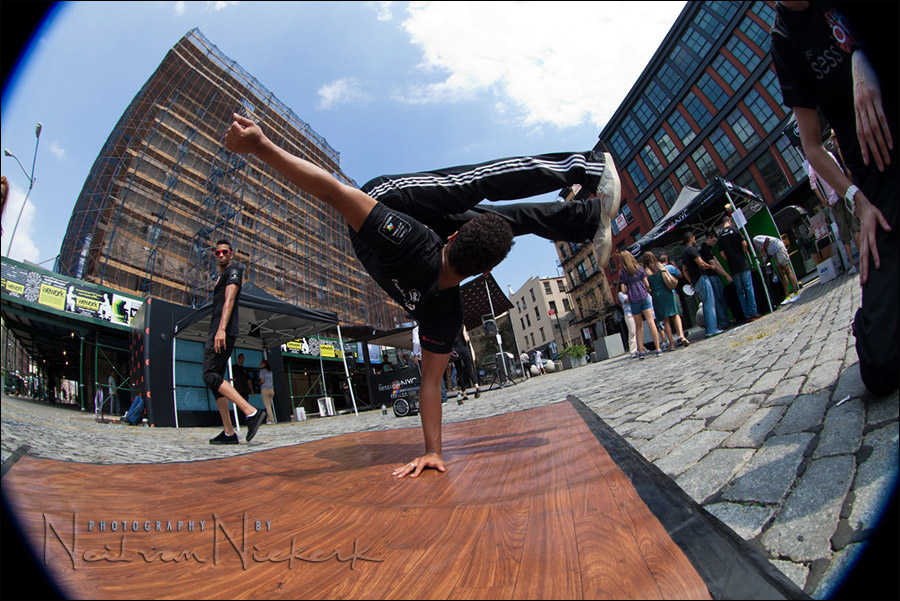
But the beauty of using a camera with a high megapixel count, like the Canon 5D mk2, is that you can crop your image and still end up with a high-resolution photograph. (Here is the same image, cropped down to 13 megapixels, losing the black edges to the frame.)
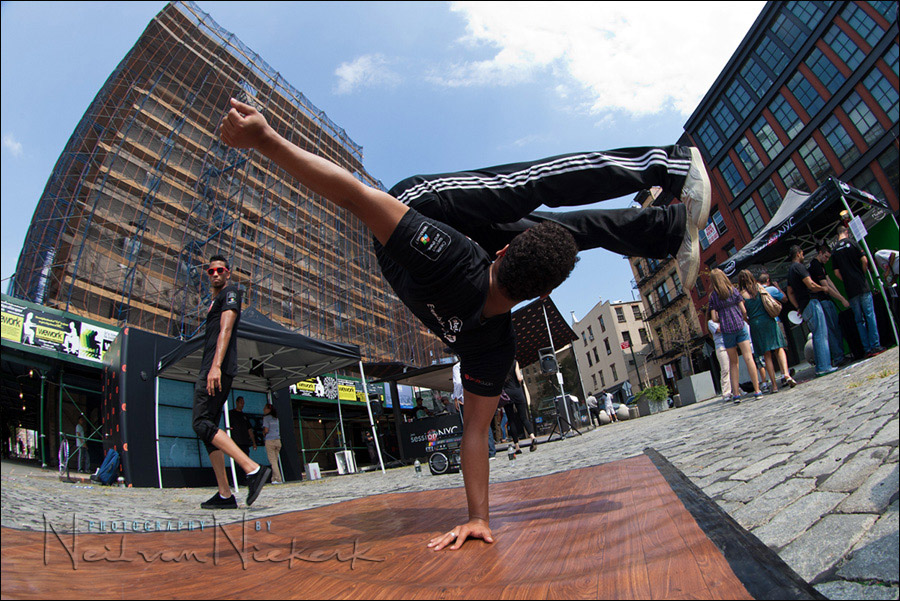
- camera settings: 1/250 @ f11 @ 320 ISO
Of course, on a crop-sensor camera the Canon 8-15mm f4 fisheye zoom comes into its own, offering a much wider view than the fixed 15mm f2.8 fish-eye lens would. Then you have the full range of the zoom available to you .. from fish-eye to just bendy. Unfortunately, I didn’t have a crop-sensor Canon DSLR to try this lens out on. Just the 5D mk2.
For these shots, I had to get all the way down on the ground. Here I am showing a few images to the dancers so they would have an idea of what I was aiming for, shooting so close-up to them.
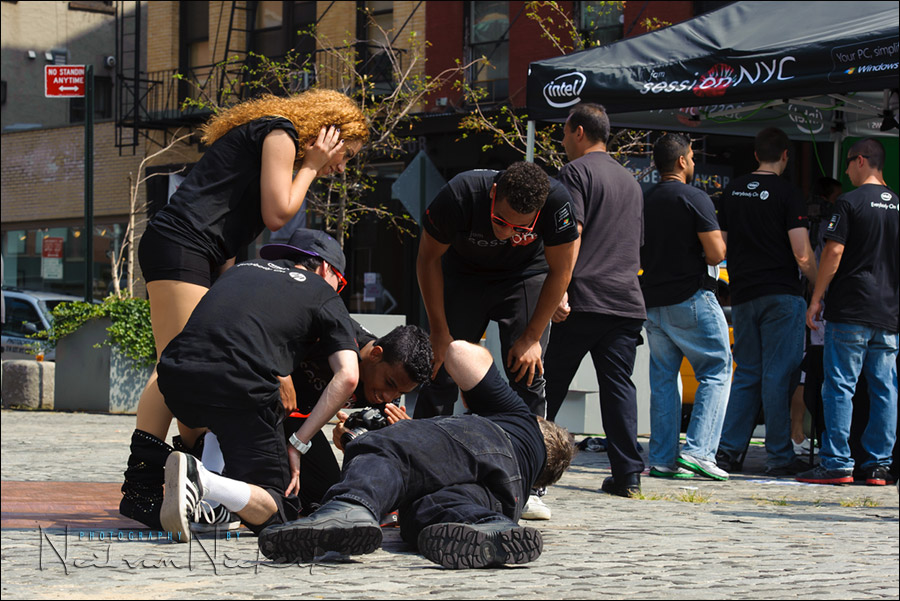
Urban landscapes become surreal, such as this art project, shot from below …

- camera settings: 1/250 @ f8 @ 640 ISO
A more normal viewpoint of the same:

This is where I believe the strength of a fish-eye lens lies … in turning the more mundane view into something quite spectactular:
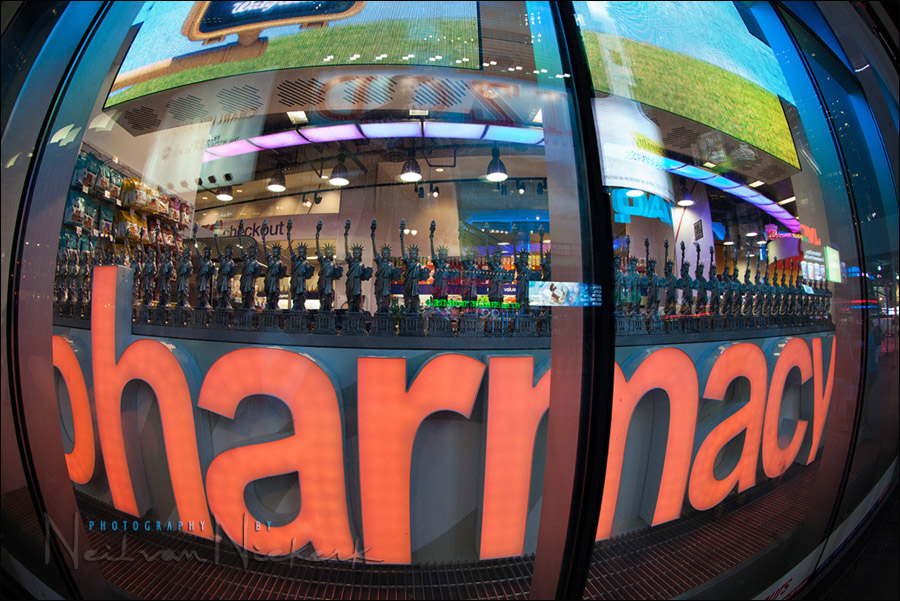
- camera settings: 1/80 @ f5.6 @ 1250 ISO
I really like this lens, even though I mostly used it at 15mm. The images are crisp, and of course, have that phenomenal depth-of-field typical of this type of lens.
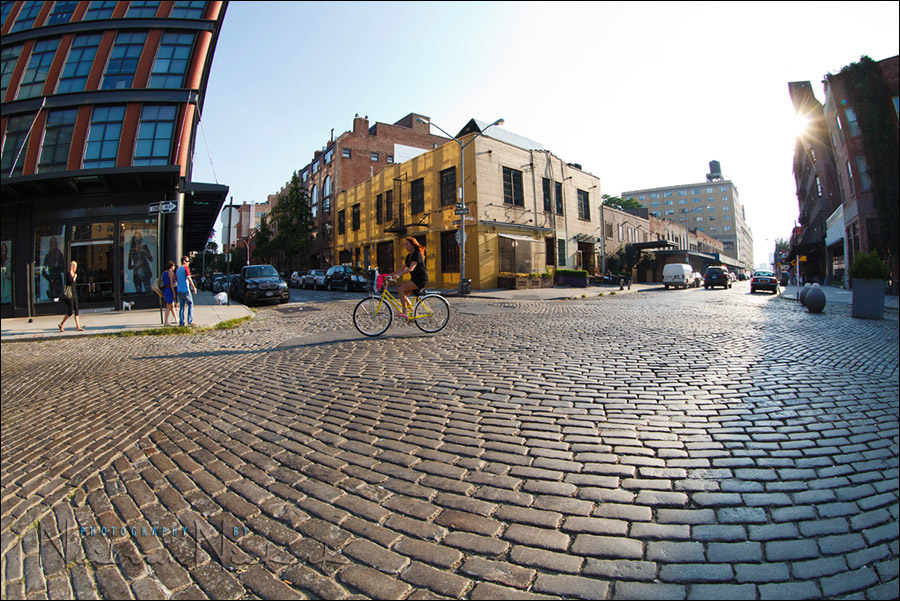
- camera settings: 1/500 @ f8 @ 640 ISO
The f/4 aperture isn’t a limitation for this type of lens. Besides, you can’t really work with shallow depth-of-field with a fish-eye lens.
Optical performance of the Canon 8-15mm f/4L fisheye zoom
The Canon fisheye zoom lens has superb optical performance. Towards the edges of the frame, some chromatic aberration can be seen, as well as some image softness. I did a few comparative test shots with the Canon EF 8-15mm f/4L fisheye zoom lens (Amazon), and the fixed focal length lens is ever so slightly sharper. There is very little optical smearing to be seen at the edges.
Here’s the thing though about fish-eye lenses – they have such a distorted view, that scrutinizing high-resolution images for optical flaws is …. well, counter-productive. It is heartening to know the fisheye zoom lens is crisply sharp, and close to the fixed lens …. but the final choice in deciding between the zoom and the fixed lens, will most likely hinge on price, and whether one would need the zoom capability.
Instead of posting 100% crops of a few images, I have placed a few high-resolution images in a download folder. It’s a simple view of the Meat-Packing District from the Manhattan Highline there. I didn’t use a tripod, so there is some slight variation between the images, but there’s enough detail there to give a realistic idea of the zoom lens’ optical capability. (The images are named in an obvious way.)
In my estimation, I’d say this lens is super-sharp. Use it with confidence.
Summary
And that about sums up my verdict … this lens is of top quality. It is a fun lens with a unique focal range. And I predict it is going to sell like hot-cakes.
(Also check out my initial review of the Canon 8-15mm f/4L lens, for more images.)
Reviews of other Canon lenses
- review: Canon EF 16-35mm f/4L IS
- review: Canon EF 24-70mm f/2.8L II
- review: Canon 70-200mm f/2.8L IS II
- more reviews of Canon photo gear
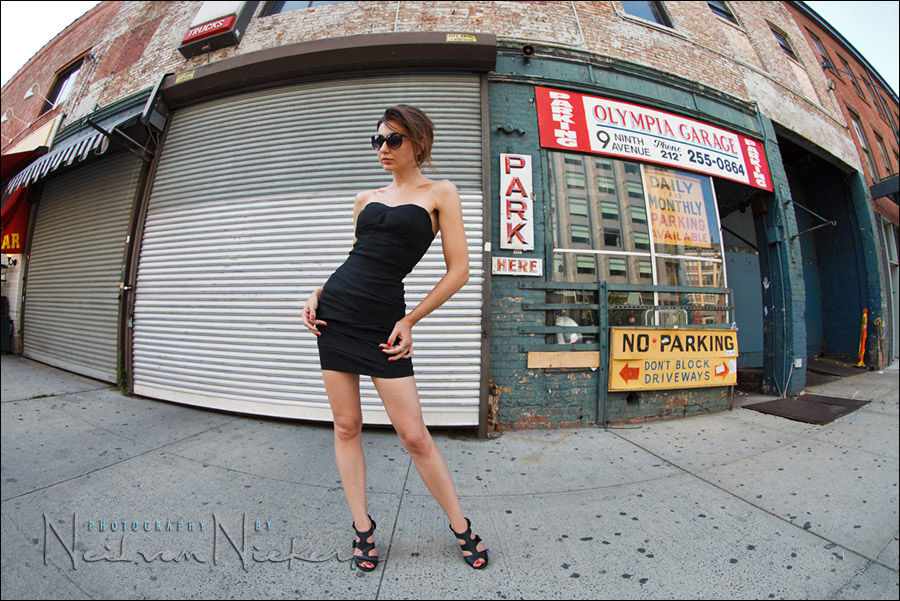


Very cool shots Neil.
Why isn’t Kate distorted at all? You said you kept camera level and shot at belly level. Is that why? Everything else though is distorted, why not Kate? Had she been horizontal (lying on ground) would she have been distorted? Why doesn’t her nose look like Shea Stadium?
I agree the novelty of the fish eye look can get old quickly but also agree that it’s great way to make the mundane look interesting.
Our model, Kate, wasn’t large in the frame, so you won’t see that typical bobble-head effect when pushing a fisheye lens right up to someone’s face.
If she had been laying down on the ground, she would’ve also been relatively without distortion as in the photo at the top.
But you have to keep in mind, that there is spatial distortion here. In fact, she is much leggier than would appear here. It just doesn’t appear as distorted as you’d expect from a fisheye .. simply because I controlled it with my point of view.
Great article! Is it possible to achieve that circular effect with the 15mm fish eye?
Nope, not with the 15mm focal length.
You need the 8mm view on a full-frame camera to get the circular effect.
On a crop-sensor camera, this lens would go from fish-eye (8mm) to just very bendy (15mm).
Thanks Neil.
You were using mostly 15mm. 8mm is great on full frame sensor for… shooting panoramas ;) You just need proper tripod with proper head: each 360deg panorama is only 3 shots with 8mm!!! Additional up&down mean only 5 shots for perfect sphere!!!
That’s a big save of time compared to any 15mm lens :))
I use a Sigma 8 mm 3.5 fisheye lense almost exclusivley for 360 X 180 panoramas. For this purpose a fisheye lense helps. And a software like PTGUI can handle fisheye images. In the final panorama you will not find any fisheye distortion.
I wonder what Lightroom’s distortion correction feature would do to that 8mm picture? Might be counter-productive to the look you were going for, but it might be interesting.
Augie, and anyone else who might be interested in playing with these files, download the RAW files from this link. Let us know how it works out.
Was thinking of purchasing this lens for wedding / event shoots. It would probabbly take some great pictures of the reception. But at over $1,500 in Montreal versus the states, wondering how much action it would see.